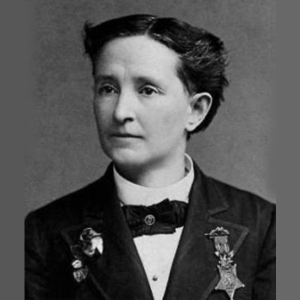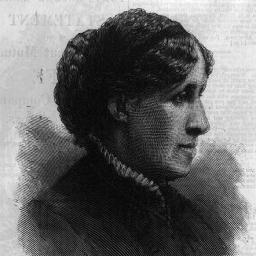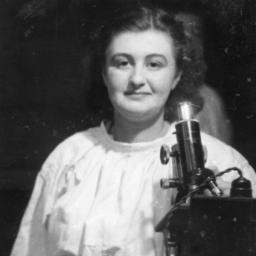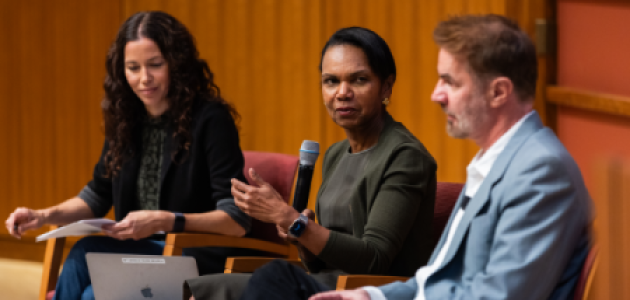The Congressional Medal of Honor and Its Recipients Essay
The Medal of Honor is the most distinguished military honor that the United States government may bestow. It is awarded to acknowledged American soldiers, sailors, marines, Siemens, guardians, and coastguardsmen for acts of courage. Since its creation in 1863, the Medal of Honor has grown to be the highest military decoration bestowed upon Americans (Price, 2019). The President of the United States often bestows the Congressional Medal of Honor to those who have dedicated themselves to their duty until the very end of their life.
The Medal of Honor was created by the United States of America during the American Civil War. The highest military honor an American serviceman can get is this one (Price, 2019). The honor is granted to someone who has shown distinction while doing their tasks and endangering their own life. John Baca, serving in South Vietnam in 1970, was a courageous individual. He belonged to the 12th Cavalry Regiment’s 1st Battalion. On February 10, 1970, Baca was a rifleman when the military unit was ambushed during Operation Toan Thang IV. This brave soldier, leading by example, fended off the vicious barrage (Zenji, 2020). Baca survived despite receiving serious wounds.
On March 2, 1971, Baca received the Medal of Honor from President Richard Nixon for his outstanding service; Baca is a good example of ultimate selflessness. The next generation of troops is inspired by his valor on the battlefield to put their lives in danger for their country and mankind ( Friedel & Baetz, 2022 ) . His sense of accountability makes him feel proud and motivates him to behave fearlessly in tough and dangerous situations.
The Congressional Medal of Honor is the highest military honor given to members of the United States military for acts of courage in battle. It serves as a reminder of the costs paid by American military personnel in defending their country and is a symbol of bravery, selflessness, and patriotism (Lord, 2020). Receiving this honor is a distinction reserved for a select few who have shown great fortitude and bravery in the face of the most difficult situations. The Congressional Medal of Honor is a beloved symbol of American military personnel’s sacrifices and serves as a lasting monument to their service and valor.
Friedel, M. K., & Baetz, J. (2022). The Los Seis de Boulder Sculpture Project: A Case Study of Socially Engaged Archivist/Artist Collaboration at the University of Colorado Boulder. Journal of Western Archives , 13 (1), 1. Web.
Lord, M. J. (2020). Book Review: The Medal of Honor: The Evolution of America’s Highest Military Decoration . War in History , 27 (4), 719-721. Web.
Price, J. M. (2019). The Medal of Honor: The Evolution of America’s Highest Military Decoration . Web.
Zenji, V. S. (2020). No More Having Your Cake and Eating It Too: The Nixon Doctrine, South Korea, and the Vietnam War (Doctoral dissertation, Chapman University).
- American Foreign Policy: 1890s to the 1950s
- Geography and Migration During Reconstruction
- Salah al-Din, an Islamic Military Leader
- Medieval Women. ‘The Book of the City of Ladies’ by de Pizan
- History of Dead Man's Penny and British Regiment
- Primary Sources Relevant to Prejudice in Modern Society
- Homestead Act of 1862: Live on and "Improve"
- America's Westward Movement and Colonial Aspirations
- The Civil Rights Movement: Historical Interpretation
- Juneteenth Dilemma: A Social Movement
- Chicago (A-D)
- Chicago (N-B)
IvyPanda. (2024, February 9). The Congressional Medal of Honor and Its Recipients. https://ivypanda.com/essays/the-congressional-medal-of-honor-and-its-recipients/
"The Congressional Medal of Honor and Its Recipients." IvyPanda , 9 Feb. 2024, ivypanda.com/essays/the-congressional-medal-of-honor-and-its-recipients/.
IvyPanda . (2024) 'The Congressional Medal of Honor and Its Recipients'. 9 February.
IvyPanda . 2024. "The Congressional Medal of Honor and Its Recipients." February 9, 2024. https://ivypanda.com/essays/the-congressional-medal-of-honor-and-its-recipients/.
1. IvyPanda . "The Congressional Medal of Honor and Its Recipients." February 9, 2024. https://ivypanda.com/essays/the-congressional-medal-of-honor-and-its-recipients/.
Bibliography
IvyPanda . "The Congressional Medal of Honor and Its Recipients." February 9, 2024. https://ivypanda.com/essays/the-congressional-medal-of-honor-and-its-recipients/.
- To find inspiration for your paper and overcome writer’s block
- As a source of information (ensure proper referencing)
- As a template for you assignment
IvyPanda uses cookies and similar technologies to enhance your experience, enabling functionalities such as:
- Basic site functions
- Ensuring secure, safe transactions
- Secure account login
- Remembering account, browser, and regional preferences
- Remembering privacy and security settings
- Analyzing site traffic and usage
- Personalized search, content, and recommendations
- Displaying relevant, targeted ads on and off IvyPanda
Please refer to IvyPanda's Cookies Policy and Privacy Policy for detailed information.
Certain technologies we use are essential for critical functions such as security and site integrity, account authentication, security and privacy preferences, internal site usage and maintenance data, and ensuring the site operates correctly for browsing and transactions.
Cookies and similar technologies are used to enhance your experience by:
- Remembering general and regional preferences
- Personalizing content, search, recommendations, and offers
Some functions, such as personalized recommendations, account preferences, or localization, may not work correctly without these technologies. For more details, please refer to IvyPanda's Cookies Policy .
To enable personalized advertising (such as interest-based ads), we may share your data with our marketing and advertising partners using cookies and other technologies. These partners may have their own information collected about you. Turning off the personalized advertising setting won't stop you from seeing IvyPanda ads, but it may make the ads you see less relevant or more repetitive.
Personalized advertising may be considered a "sale" or "sharing" of the information under California and other state privacy laws, and you may have the right to opt out. Turning off personalized advertising allows you to exercise your right to opt out. Learn more in IvyPanda's Cookies Policy and Privacy Policy .

- Tools and Resources
- Customer Services
- Africa and Diaspora Studies
- African American Studies
- Arts and Leisure
- Business and Labor
- Education and Academia
- Government and Politics
- Religion and Spirituality
- Science and Medicine
- Agriculture
- Archives, Collections, and Libraries
- Art and Architecture
- Business and Industry
- Exploration, Pioneering, and Native Peoples
- Health and Medicine
- Humanities and Social Sciences
- Law and Criminology
- Military and Intelligence Operations
- Miscellaneous Occupations and Realms of Renown
- Performing Arts
- Science and Technology
- Society and Social Change
- Sports and Games
- Writing and Publishing
- Before 1400: The Ancient and Medieval Worlds
- 1400–1774: The Age of Exploration and the Colonial Era
- 1775–1800: The American Revolution and Early Republic
- 1801–1860: The Antebellum Era and Slave Economy
- 1861–1865: The Civil War
- 1866–1876: Reconstruction
- 1877–1928: The Age of Segregation and the Progressive Era
- 1929–1940: The Great Depression and the New Deal
- 1941–1954: WWII and Postwar Desegregation
- 1955–1971: Civil Rights Era
- 1972–present: The Contemporary World
- Photo Essay - Black Medal of Honor Recipients

Featured Essay - A History of Black Medal of Honor Winners
- Share Facebook LinkedIn Twitter
Since the dawn of the nation, the armed forces have included black Americans. As early as 1652, leaders of the Massachusetts Bay Colony mandated that all Indians and people of African descent residing in "settled" areas enlist in a local militia. Prince Duplex, Sr . was one of nearly 300 men of African descent to enlist in the Connecticut militia during the Revolutionary War, and Oscar Marion , a slave on the South Carolina plantation of war hero General Francis Marion, fought side by side with his master, also serving as "personal assistant, bodyguard, sous-chef, bugler, courier, confidant, and oarsman." When the Medal of Honor—the nation's highest award for military valor—was established in 1861, African Americans were not excluded. In time, however, conferral of the award began to mirror the status of black Americans in general, embodying a tumultuous history that has not always been so honorable.
The origins of the award lie with the Civil War. On 21 December 1861—exactly a year and a day after the secession of South Carolina—President Abraham Lincoln signed Senate Bill 82 into law. The measure, created to honor "non-commissioned officers and privates as shall most distinguish themselves by their gallantry in action, and other soldier-like qualities," was at first an honor exclusively for Navy sailors, but by the following year was expanded to include the Army. Though originally intended to cover only the length of the Civil War, the Medal of Honor was made a permanent decoration in 1863, and has remained the highest honor of all military branches. Almost immediately after the award's establishment, black Americans—of whom nearly eighteen thousand are estimated to have served with Union forces—became eligible for the honor, at least in principle.
During the first forty years or so of the Medal of Honor, African American servicemen were regularly considered as recipients, although recommendations were not made in equal proportion to white soldiers. The first African American to earn the Medal of Honor was Sergeant William Carney , a flag-bearer in Company C of the 54th Massachusetts Infantry. Though Carney was part of the 18 July 1863 assault on Fort Wagner, a Confederate stronghold in South Carolina, he would not receive the medal until 1900. Such delays were not uncommon, however, among both white and black soldiers that served in the Civil War.
The first African American to actually receive the Medal of Honor was the contraband sailor Robert Blake , who was awarded it in April 1864 for his naval exploits the previous December. While serving on the U.S.S. Marblehead , a Union battleship operating on the Stono River in South Carolina, he helped fend off heavy Confederate fire with his rifle. Another critical moment in Medal of Honor history occurred on 29 September 1864, when, during the Battle of New Market Heights in Virginia, thirteen black soldiers earned the award for their valor in leading the charge against Confederate fortifications after many of their officers were killed or wounded. The last Civil War soldier to be honored with the medal was Sergeant Andrew Jackson Smith , who fought in the Battle of Honey Hill in 1864 but whose medal was not awarded until 2001. His original nomination had been considered, but was ultimately turned down because his regimental commander, wounded early in the battle, was not aware of Smith's actions, leaving Smith's heroics unreported in the battle record.
After the Civil War, as African Americans transitioned from volunteer service members to career military men, the potential for combat action increased. Through the end of the nineteenth century, thirty-two black soldiers and sailors earned the medal while serving in the Indian Wars, the Spanish-American War, and the intervening peacetime years. The most significant of these men were the eighteen "Buffalo Soldiers" and scouts, men like sergeants Moses Williams and John Warrior , who, in a bitter twist of fate, helped conquer the western frontier from 1866–1890. (Notably, while the Medal of Honor today is reserved for only combat feats of heroism, prior to World War II the Navy awarded two versions of the medal, one of which was for peacetime acts of heroism. Robert Sweeney , the only double Medal of Honor recipient among African Americans and one of eight black peacetime recipients—all in the Navy—earned his awards in 1881 and 1883, both times for saving a man from drowning.)
It was not until World War I that the color of a man's skin came to be a serious barrier to Medal of Honor consideration. Though there was no written policy specifying discrimination, all branches of the military were well in step with the Jim Crow conditions of racism, and would continue to be so until the Korean War over thirty years later. As a result, no African Americans were awarded the Medal of Honor during World War I and World War II, and only a few were even considered for the award.
Following President Truman's order to desegregate the military in 1948, award practices for the Medal of Honor slowly began to change. In the Korean War, two soldiers— Cornelius Charlton and William Thompson —earned the award, but it was not until the Vietnam War that black servicemen not only served on an equal footing with whites, but were also awarded the Medal of Honor in the same proportion. Of the twenty African Americans to earn the Medal of Honor in Vietnam, the first was Milton Olive III (1965); two years later, James Anderson, Jr. became the first ever black member of the Marine Corps to receive the Medal of Honor. Vietnam Special Forces soldier William Bryant (1969) was the last African American to be awarded the Medal of Honor, and today there is but one living African American recipient, Vietnam veteran Clarence Sasser .
Despite the important strides made during the Vietnam War, the Army and the Navy had yet to reckon with the obvious inequities that occurred during both World Wars. Sadly, the Navy, which nominated no black sailor for the Medal of Honor in the years 1941–1945, has never made any attempt to correct the discrimination that took place during World War II, and no African American sailor has earned the Medal of Honor since Robert Penn in 1898. This was not, however, the case with the Army. In the 1990s, in response to pressure from historians and the general public, the Army embarked on a series of studies looking into the conferment of past awards. In 1991, after his case was reopened and it was learned that his original recommendation for the award may have been misplaced, Freddie Stowers became the only black World War I Medal of Honor recipient. In 1992, the Army commissioned an independent study, conducted by Shaw University (the oldest historically black college in the south) to examine its records.
After four years of research, the study concluded that ten men, all but one of whom had been awarded the Distinguished Service Cross—the highest decoration for Army personnel, but not across all armed forces branches—were possible candidates for an upgrade to the Medal of Honor. The Army subsequently examined these recommendations and reduced the number of award upgrades to seven, thereby helping to rectify, at least in part, the discrimination of the past. Those who were chosen to receive the Medal of Honor included officers Vernon Baker and John Fox , both of the 92nd Division, as well as Sergeant Edward Carter, Jr. Of all these recipients, however, Vernon Baker was the only one still alive to receive his medal, which was presented by President Bill Clinton at a special White House Ceremony on 14 January 1997.
Though additional tributes for valor have since been established, the Medal of Honor remains America's highest and most prestigious combat award. Given the progress of African Americans in the military, and its recent willingness to acknowledge its past misdeeds, there is no reason not to believe that future Medal of Honor candidates, no matter what their skin color or gender (now that women are serving in combat), will continue to be judged solely on the merit of their deeds. This practice is as it should be in a country that, by its very founding principles, holds that all men are created equal.
Glenn Allen Knoblock
PRINTED FROM OXFORD AFRICAN AMERICAN STUDIES CENTER (www.oxfordaasc.com). © Oxford University Press, 2022. All Rights Reserved. Under the terms of the licence agreement, an individual user may print out a PDF of a single chapter of a title in Oxford Medicine Online for personal use (for details see Privacy Policy and Legal Notice ).
date: 25 October 2024
- Cookie Policy
- Privacy Policy
- Legal Notice
- Accessibility
- [66.249.64.20|185.66.14.236]
- 185.66.14.236
Recipient Database
Read medal of honor recipient stories of heroism, bravery, and valor in action.
Our interactive database contains every Medal of Honor recipient since its initial inception in 1861. Use the search bar to filter and sort the database by first name, last name, service branch, and conflict.

Through education, leadership, and inspiring spaces for learning and reflection, the National Medal of Honor Museum Foundation preserves and expands the impact of the 3,519 awarded Medal of Honor recipients and the more than 40 million Americans who have served in the U.S. Armed Forces since the Civil War.
Registered 501(c)(3). EIN: 90-0900556
- Choctaw Stadium 1717 East Randol Mill Road Suite 301 Arlington, TX 76011
- 817-274-1861
- [email protected]

Rodger Young: the deaf and nearly blind Medal of Honor recipient
Rodger Wilton Young may not be a household name, but his heroics, bravery and selflessness exhibited everything the Medal of Honor encompasses. In 1944, the Medal of Honor committee awarded Rodger Young the nation’s highest honor for military personnel. Unlike most – or perhaps all – of the other 3,473 Medal of Honor recipients in U.S. history , Rodger Young was deaf.
Born in Tiffin, Ohio in 1918, Young was diminutive in stature but big in heart — a gifted athlete whose tenacity more than made up for his lack of physical size. In high school, he suffered an injury on the basketball court that severely affected his sight and left him almost completely deaf and yet, undaunted. Not only did he later manage to pass the necessary exams to enlist in the Ohio National Guard, but Young also found himself posted to B company, 148 th Infantry Regiment of the 37 th Infantry Division. Rodger was deaf, nearly blind and — at 5’ 2” — the shortest man in the company.
Young grew up in rural Ohio and acquired excellent marksmanship skills which he honed as an avid hunter. Ironically, his vision loss, and subsequent use of corrective glasses, didn’t prevent him from maintaining and applying those skills. Young quickly found himself as a rifle instructor and sergeant leading his infantry squad. It wasn’t long into his enlistment before his unit was called upon to do their part in WWII. According to Ohio History Central , “Eventually Young’s unit was sent to the Fiji Islands and then to the Solomon Islands to battle the Japanese. Believing that he could not safely lead his unit due to hearing difficulties, Young requested and received a demotion to private.”
Young reflected the same sense of selflessness when his actions saved the lives of his platoon in the summer of ’43. His official citation reads :
On 31 July 1943, the infantry company of which Pvt. Young was a member was ordered to make a limited withdrawal from the battle line in order to adjust the battalion’s position for the night. At this time, Pvt. Young’s platoon was engaged with the enemy in a dense jungle where observation was very limited. The platoon suddenly was pinned down by intense fire from a Japanese machine gun concealed on higher ground only 75 yards away. The initial burst wounded Pvt. Young. As the platoon started to obey the order to withdraw, Pvt. Young called out that he could see the enemy emplacement, whereupon he started creeping toward it. Another burst from the machine gun wounded him the second time. Despite the wounds, he continued his heroic advance, attracting enemy fire and answering with rifle fire. When he was close enough to his objective, he began throwing hand grenades and while doing so was hit again and killed. Pvt. Young’s bold action in closing with this Japanese pillbox and thus diverting its fire, permitted his platoon to disengage itself, without loss and was responsible for several enemy casualties.
For his heroics, Young was posthumously awarded the Congressional Medal of Honor in January 1944. Ohio’s governor declared March 25, 1945 “Rodger W. Young Day.” Soon thereafter, famous songwriter and musical composer Frank Loesser ( Guys and Dolls, How to Succeed in Business Without Really Trying and others) even wrote a song about him called, “The Ballad of Rodger Young.” Here’s the West Point Cadet Glee Club performing it:
Unlike so many veterans who return from battle with hearing loss ( learn how hearing loss is the top service-connected disability ), Private Rodger Young headed into battle with it. Heroically sacrificing his life to save his comrades, Rodger proved that hearing loss is something that needn’t stop anyone from achieving anything they set out to do. He was truly a Hero With Hearing Loss.
March 25 — the anniversary of the awarding of the first Medal of Honor to Private Jacob Parrott in 1863 — is the day we recognize and remember the valor of our nation’s bravest heroes. Join us in saluting our heroes and read more about the Medal of Honor .
Provided by Hamilton ® CapTel ® . Copyright © 2021 Hamilton Relay. Hamilton is a registered trademark of Nedelco, Inc. d/b/a/ Hamilton Telecommunications. CapTel is a registered trademark of Ultratec, Inc.

Mary Edwards Walker

In all of United States history, there has only been one woman to receive the Medal of Honor. Mary Edwards Walker is that woman. As a surgeon, women’s rights advocate, abolitionist, and spy, Walker became the first female U.S. Army surgeon during the Civil War. Her legacy has been celebrated across the country: in 2012 Walker’s hometown unveiled a 900-pound bronze statue in honor of her contributions and she is featured as part of the American Women Quarters Program.
Mary Edwards Walker was born on November 26, 1832 in the Town of Oswego, New York. She was the fifth daughter of abolitionists Alvah and Vesta Whitcomb Walker. Her parents encouraged her to think freely, and allowed her to wear “bloomer” pants, instead of the skirts and corsets women were required to wear at the time. Education was also very important to the Walker family. Mary’s parents started the first free school in Oswego, New York so their daughters would be just as educated as their son. Outside of school, all of the children helped with manual labor on the farm. After finishing at her parent’s school, Walker and two of her older sisters attended Falley Seminary in Fulton, New York. When Walker graduated, she became a teacher in Minetto, New York but she knew she wanted to become a doctor. She worked until she saved enough money to pay for medical school. Walker then attended Syracuse Medical College and received her medical degree in 1855. She became the second woman to graduate from this college after Elizabeth Blackwell.
Shortly after she graduated, Walker married another medical school student Albert Miller on November 16, 1855. They started a medical practice together in Rome, New York. However, the practice did not succeed because the public did not want to accept a female doctor. The couple later divorced.
When the Civil War began in 1861, Walker wanted to join the Union’s efforts. She went to Washington but was not allowed to serve as a medical officer because she was a woman. She decided to still serve as an unpaid volunteer surgeon at the U.S. Patent Office Hospital in Washington. At the time, the army had no female surgeons, so Walker was only allowed to practice as a nurse in temporary hospitals set up around the capital. In 1862, Walker moved to Virginia and started treating wounded soldiers near the front lines at Fredericksburg and Chattanooga . In 1863, her request to practice as a surgeon was finally accepted. She became the first female U.S. Army surgeon as a "Contract Acting Assistant Surgeon (civilian)" by the Army of the Cumberland.
During her work as a surgeon in the war, Walker often crossed battle lines to care for soldiers and civilians. In April of 1864, Walker was captured by Confederate troops as a spy. She was held as a prisoner of war for four months at the notorious Castle Thunder prison near Richmond, the Confederate capital. While imprisoned, she refused to wear the women’s clothes provided to her. She wore men’s clothes her entire life because she felt they were more comfortable and hygienic and made her job as a surgeon easier. She had even wore pants under her skirt at her wedding. Walker was released from prison in August of 1864 as part of a prisoner exchange with other medical doctors. In September 1864, she was contracted as the assistant surgeon of the Ohio 52 nd Infantry. During the remainder of the Civil War, Walker served at the Louisville Women's Prison Hospital and at an orphan asylum in Clarksville, Tennessee. After the war's conclusion in 1865, Walker was awarded the Medal of Honor for Meritorious Service by President Andrew Johnson. She was never granted a military pension since she had never been officially commissioned in the army, A few years later, Walker published a party autobiographical book called Hit: Essays on Women's Rights in 1871.
Beyond her work in the Civil War, she was an advocate for women’s rights. She famously wore pants and advocated for “dress reform.” She was arrested in New Orleans in 1870 because she was dressed like a man. This was not her only arrest for wearing men's clothes, including her signature top hat. Walker responded to the criticism of her sartorial choices by saying, "I don't wear men's clothes, I wear my own clothes." [1] She also fought for suffrage and tried to register to vote in 1871, but was denied. She believed the US Constitution already granted women the right to vote. In 1912, and 1914, she testified in front of the US House of Representatives in support of women's suffrage. As suffragists moved towards advocating for a federal amendment, and she was ostracized by more mainstream suffragists for her choice to wear pants, jackets, and top hats, Walker became increasingly distanced from the movement. In her later years, Walker opened up her home to others who were harassed or arrested for not conforming to traditional ideas for how people should dress.
In 1916, the Medal of Honor was taken away from Walker and many others after the government reviewed their eligibility. However, this did not stop Walker from wearing her award until her death in 1919. At the age of eighty-six, Mary Edwards Walker died of illness on February 21, 1919. She was buried in a black suit.
In 1977, President Jimmy Carter legally restored the Medal of Honor to Walker’s name.
[1] National Parks Service. "Dr. Mary Edwards Walker." Accessed June 27, 2019. https://www.nps.gov/people/mary-walker.htm.
- U.S. National Library of Medicine. "Changing the Face of Medicine | Mary Edwards Walker." October 14, 2003. https://cfmedicine.nlm.nih.gov/physicians/biography_325.html.
- National Parks Service. "Dr. Mary Edwards Walker." Accessed June 27, 2019. https://www.nps.gov/people/mary-walker.htm.
- National Parks Service, "Dr. Mary Edwards Walker." Access November 3, 2023. https://www.nps.gov/rich/learn/historyculture/dr-mary-edwards-walker.htm
- Lange, Katie. "Meet Dr. Mary Walker: The Only Female Medal of Honor Recipient." U.S. Army. Accessed March 7, 2017. https://www.army.mil/article/183800/meet_dr_mary_walker_the_only_female_medal_of_honor_recipient.
- Military.com. "Medal of Honor Spotlight: Dr. Mary Edwards Walker." Accessed July 13, 2019. https://www.military.com/history/dr-mary-edwards-walker.html.
- Sharon M. Harris, Dr. Mary Walker: An American Radical, 1832-1919 (New Brunswick: Rutgers University Press, 2009)
Photo: National Parks Service- https://www.nps.gov/people/mary-walker.htm
MLA – Alexander, Kerri Lee. “Mary Edwards Walker.” National Women’s History Museum, 2019. Date accessed.
Chicago – Alexander, Kerri Lee. “Mary Edwards Walker.” National Women’s History Museum. 2019. www.womenshistory.org/education-resources/biographies/mary-edwards-walker.
Freethought Trail. "Walker, Mary Edwards." Accessed July 13, 2019. https://freethought-trail.org/profiles/profile:walker-mary-edwards/.
Related Biographies

Stacey Abrams

Toshiko Akiyoshi

Louisa May Alcott

June Almeida
Related background, exploring maria tallchief: a dance journey through history, voices of change: analyzing speeches by lgbtq+ women, silences in the archive: women's history and primary sources (civil war), mary church terrell .
to submit an obituary
Please email [email protected] or call 570-230-4917. Please include your name, mailing address, and phone number along with the copy and photo.

News | Memorial Day: 5 local Medal of Honor recipients…
Share this:.
- Click to share on Facebook (Opens in new window)
- Click to share on X (Opens in new window)
- Crime and Public Safety
- Digital Archives
- Mahanoy Area School District V.B.L
- Pet of the Week
- Scholastic Superstars
News | Memorial Day: 5 local Medal of Honor recipients paid ultimate price

Messerschmidt

Congressional Medal of Honor Society

Army Medal of Honor

They relentlessly blasted attackers until their dying breaths, bludgeoned “fanatical foes” with guns bereft of ammunition and, in one case, saved two comrades by leaping on a live grenade. Not one of them lived to be older than 28.
The five local awardees of the Congressional Medal of Honor who died in combat are among only 16 native sons – those born in Luzerne, Lackawanna and Schuylkill counties – who have received the nation’s highest medal for valor since it was conceived during the Civil War, according to a database maintained by the Congressional Medal of Honor Society .
They are among roughly 3,500 service members – 336 of whom were born in Pennsylvania – who earned the award “through conspicuous gallantry and intrepidity at the risk of life above and beyond the call of duty,” according to the society.
June 16, 1943
Second Lt. Joseph Raymond Sarnoski, a coal miner’s son, was born in Simpson, Lackawanna County, on Jan. 30, 1915. He was only 28 years old when he volunteered to serve as a bombardier with the U.S. Army Air Corps’ 43rd Bombardment Group for a photographic mapping mission over the heavily defended Solomon Islands.
His B-17, “Lucy,” took off from Port Moresby at 4:30 a.m. June 16, 1943, only days before Sarnoski was scheduled to rotate home, according to the National Medal of Honor Museum. The bomber arrived at its initial target, Bougainville, while the sun was still too low for reconnaissance, so it shifted to its secondary target – the island of Buka just to the north, according to the museum.
When the recon was nearly complete, nearly 20 Japanese Zeros intercepted the lone bomber and attacked in force.
According to Sarnoski’s Medal of Honor citation, he wielded the aircraft’s nose guns and fought off the first wave, allowing the pilot to complete the plotted course. But a coordinated frontal attack then seriously injured five members of the crew and caused extensive damage to the bomber.
Sarnoski, though wounded, continued firing and shot down two enemy aircraft until a 20mm shell burst in the nose of the bomber, knocking Sarnoski into a catwalk underneath the cockpit.
“With indomitable fighting spirit, he crawled back to his post and kept on firing until he collapsed on his guns,” his citation reads.
Mortally wounded, Sarnoski died after ensuring the “vitally important mission” had been completed. The photos captured during the flight helped planners create maps used in the successful Allied invasion of Bougainville at Empress Augusta Bay in November 1943.
Sarnoski is buried in the National Memorial Cemetery of the Pacific in Honolulu.
Feb. 19-20, 1944
Cpl. Anthony Peter Damato was born on March 28, 1922, in Shenandoah and worked as a truck driver prior to enlisting in the U.S. Marine Corps and being assigned to an assault company of the 2nd Battalion, 22nd Marine Regiment.
Damato was first deployed to North Ireland and went on to participate in the amphibious invasion of North Africa, according to the Marine Corps’ History Division. He distinguished himself in Arzew, Algeria, in November 1942, when he landed with an assault wave tasked with entering and seizing the port, according to the division.
Damato returned stateside in March 1943 and was redeployed to the Pacific theater three months later.
He ended up battling “fanatical groups of Japanese still at large” and entrenched on Engebi Island in the Eniwetok Atoll, Marshall Islands.
During Operation Catchpole on the night of Feb. 19, 1944, Damato and two other Marines were dug into a foxhole on his company’s defensive perimeter, which had been “dangerously thinned by the forced withdrawal of nearly half of the available men,” according to his citation.
A Japanese soldier snuck up and threw a hand grenade into his darkened hole. Damato desperately groped for the grenade but was unable to grab it in time; instead he jumped on top of it, knowing the move would be fatal, his citation reads.
Damato’s body absorbed the explosion and the other two Marines survived.
The 21-year-old native of Schuylkill County was killed instantly and is buried in the National Memorial Cemetery of the Pacific in Honolulu.
Sept. 17, 1944
Born in Grier City, Schuylkill County, Sgt. Harold O. Messerschmidt worked at Sun Shipyards in Chester before joining the U.S. Army in May 1943. Six months later, he was en route to Casablanca and then got his first taste of combat in Anzio, Italy.
After being redeployed to the Vosges Mountains in France, Messerschmidt’s Company L of the 30th Infantry Regiment was assigned to make defensive preparations near Raddon-et-Chapendu on Sept. 17, 1944. The Nazis attacked in force around noon, pummeling the company’s 40-yard front along a ridge with tank and 20mm fire before attacking with 100 infantrymen.
The Germans, described in Messerschmidt’s citation as a “fanatical foe,” came charging up a hillside.
Messerschmidt was shot and gravely wounded by an automatic weapon, but he jumped back to his feet and released a burst of submachine-gun fire, killing five Nazis and wounding many others, according to his citation.
Then his 180 rounds of ammunition ran out.
“Virtually surrounded by a frenzied foe and all of his squad now casualties, he elected to fight alone, using his empty submachine gun as a bludgeon against his assailants,” according to the citation.
Messerschmidt bludgeoned one Nazi who was about to kill a wounded American, and continued fighting with his empty gun as friendly reinforcements came running up the hill.
Messerschmidt, 20, was killed as he “continued furiously to wield his empty gun against the foe in a new attack,” the citation reads.
He is buried in Christ Church Cemetery in Rush Twp.
Sept. 27-28, 1944
A native of Summit Station, Schuylkill County, Capt. Robert E. Roeder was commanding Company G of the U.S. Army’s 350th Infantry Regiment in defense of the strategic Mount Battaglia, Italy, on the night of Sept. 27-28, 1944.
As the enemy repeatedly counterattacked his position, Roeder found himself being “completely exposed to ceaseless enemy artillery and small-arms fire,” according to his citation.
Roeder continuously circulated among his troops until, during a sixth counterattack, the Nazis reclaimed the hill with the help of fog and flamethrowers. Close-quarters combat ensued, inflicting heavy losses on the Germans, but Roeder was seriously wounded and knocked unconscious by shell fragments the following morning.
After being carried to a command post, he woke up, refused medical treatment and “dragged himself to the door of the command post,” the citation reads.
He began shouting orders and firing a rifle, killing two Nazis before he was killed by an exploding shell. The Army credited the 27-year-old’s efforts with helping his unit repulse “fanatical enemy attempts to retake” the hill.
Roeder is buried in Arlington National Cemetery, Virginia.
Jan. 8, 1945
Nescopeck resident Sgt. Day G. Turner, born in Berwick, enlisted in the U.S. Army and found himself facing intense combat during the Battle of the Bulge.
While serving with the 319th Infantry Regiment on Jan. 8, 1945, Turner’s nine-man squad was tasked with holding a critical flanking position near Dahl, Luxembourg. It was then his squad was besieged by “withering artillery, mortar, and rocket fire,” according to his citation.
Turner withdrew his squad into a nearby farmhouse, determined to defend it to the last man. His soldiers repelled repeated attacks, inflicting heavy losses on the Nazi interlopers.
The Germans eventually broke in with support from tank fire, but Turner still refused to surrender, despite five of his men being wounded and another having been killed. Turner flung a flaming can of oil to disperse the invaders and then “fought doggedly from room to room” by tossing hand grenades and bayonetting two “fanatical Germans” who tried charging through a doorway, according to his citation.
When he ran out of ammunition, Turner picked up enemy weapons to continue waging a fight that raged for four hours.
The Nazis finally surrendered when only three of Turner’s men remained uninjured. Turner gathered 25 prisoners and counted 11 enemy dead, along with “a great number of enemy wounded,” according to the citation.
He survived the harrowing ordeal but did not live to receive his Medal of Honor.
Exactly one month later, on Feb. 8, 1945, Turner came across some U.S. soldiers who were pinned down by machine-gun fire from a Nazi pillbox in Wallendorf, Germany.
Turner wielded a pistol and jumped into a bomb crater to assault the position, but was ultimately cut down by the machine-gun fire. He was 23 years old.
Army officials credited Turner’s actions with serving as a diversion for the Americans, who eventually advanced on the machine gun position and routed the garrison.
Turner was posthumously awarded the Medal of Honor and is buried in Luxembourg American Cemetery and Memorial.
More in News

World News | Argentine police raid the Buenos Aires hotel where One Direction’s Liam Payne died

National News | McDonald’s says onions from California grower linked to deadly E. coli outbreak


National News | President Biden to apologize for 150-year Indian boarding school policy

Health | Older men’s connections often wither when they’re on their own
Selena's enduring legacy as a music icon is evident in her posthumous Medal of Arts

If the "Queen of Tejano" music Selena Quintanilla Perez — simply known as Selena — were alive today , the Grammy Award-winning superstar would be 53 years old. Next year will mark the 30th anniversary of her death.
Yet, her standing as a musical and cultural icon was evident Monday, when President Joe Biden presented the 2022 and 2023 National Medals of Arts to a prestigious group of Americans including film directors Steven Spielberg and Spike Lee, the singer/actor Queen Latifah — and posthumously, Selena.
The National Medal of Arts is the highest award given to artists and arts patrons by the federal government. It is awarded by the president to recipients for “their outstanding contributions to the excellence, growth, support, and availability of the arts in the United States.” Suzette Quintanilla Arriaga accepted the award on her sister’s behalf. She later posted an image of the award on Instagram Stories, noting “Extreme grateful for this honor given to (my) sister today.”
Although the ceremony honored other recipients posthumously, Selena’s inclusion was notable because it came almost three decades after her death. Many devoted fans posted messages on social media platforms in response to news of the honor, with comments such as “She absolutely deserves every recognition in the world!!” and “Congratulations! Siempre (always) Selena!”
Deborah Paredez, professor at Columbia University and author of “American Diva,” said she was not surprised that Selena is still receiving honors and acclaim.
While teaching undergraduates recently, she was “amazed” at her young students’ fond memories and connections with Selena and her music. “It shows how she is part of our cultural inheritance," she said.
“Because Selena was modeling a way of being for young women, for bicultural young people, that part of her legacy and persona continues to be something that appeals to young people, again and again,” Paredez noted.
Born in 1971 in Texas, Quintanilla rose to fame as the ‘Queen of Tejano, or Tex-Mex, music. After growing up performing with her family, she achieved success in the Latin music market by blending a variety of Latin music styles with contemporary pop sounds. In 1995, she was shot and killed by the president of her fan club.
The outpouring of emotion that followed Selena’s death demonstrated the growing demographic and economic power of Latinos — and marked the beginning of her enduring stardom across generations of Latino fans. Her posthumously-released bilingual album, “Dreaming of You” (1995) became a global hit , making her a pioneering crossover artist.
According to Paredez, Selena “reminded so many industry people of the importance of Latine performers and the need for them, because she carved a space for more representation of Latinas in Hollywood and the music and entertainment industries.”
Selena’s life inspired a 1997 film starring Jennifer Lopez, a 2020 Netflix miniseries , books, tribute concerts, clothing and makeup lines, stage musicals and i nnumerable other commemorations . A remastered version of her multiplatinum 1994 album “Amor Prohibido” topped the Billboard charts earlier this year .
“Everyone seems to have a stake in remembering (Selena), whether it was young girls who were Latina and from other communities who were dressing like her and singing her songs, or whether it was corporate sponsors who were tapping into Latino-based marketing,” Paredez previously told NBC News.
In death as in her short life, Selena has remained a phenomenon. Since her death, she has been celebrated from her star on the Hollywood Walk of Fame to exhibits at the Smithsonian’s National Museum of American History in Washington, D.C.
“She (Selena) meant a lot to different people and constituencies,” Paredez said. “People en Español launched as a result of the success of the sales from the magazine announcing her passing; gay Latino and trans communities still honor and remember her.”
In a quote widely attributed to her, Selena once said, “The goal is not to live forever — but to create something that will.”
Selena was an extraordinarily gifted performer, Paredez said.
"At the same time, and because Latinos are still struggling for representation in the entertainment industry, there haven’t been enough people to replace her, and not because there aren’t extraordinary talented Latine artists out there. They just don’t get the opportunities for representation — this award really speaks to her enduring meaning and significance for our communities," she said.
Among the other Latino recipients of the 2022/2023 honors were actor and producer Eva Longoria, noted accordionist and "conjunto" musician Leonardo “Flaco” Jimenez, and photographer Randy A. Batista. Writer and former poet laureate of the U.S. Juan Felipe Herrera was awarded a National Humanities medal.
Both first lady Jill Biden and the president spoke to the honorees and their guests at a brief reception following a private ceremony. “The power of the arts and matters. It matters now more than ever. This is a very consequential time for the arts and the humanities of America,” the president said. “Extreme forces are banning books, trying to erase history, straight misinformation ... You make history. You combat lies with truth.”
Raul A. Reyes, a lawyer, is a member of the USA Today Board of Contributors. He has written for The New York Times, the Los Angeles Times, The Christian Science Monitor, Texas Monthly and the Huffington Post.
- Student Opportunities
About Hoover
Located on the campus of Stanford University and in Washington, DC, the Hoover Institution is the nation’s preeminent research center dedicated to generating policy ideas that promote economic prosperity, national security, and democratic governance.
- The Hoover Story
- Hoover Timeline & History
- Mission Statement
- Vision of the Institution Today
- Key Focus Areas
- About our Fellows
- Research Programs
- Annual Reports
- Hoover in DC
- Fellowship Opportunities
- Visit Hoover
- David and Joan Traitel Building & Rental Information
- Newsletter Subscriptions
- Connect With Us
Hoover scholars form the Institution’s core and create breakthrough ideas aligned with our mission and ideals. What sets Hoover apart from all other policy organizations is its status as a center of scholarly excellence, its locus as a forum of scholarly discussion of public policy, and its ability to bring the conclusions of this scholarship to a public audience.
- Russell A. Berman
- Robert Service
- Arun Majumdar
- H.R. McMaster
- Justin Grimmer
- Economic Policy Group
- History Working Group
- Hoover Education Success Initiative
- National Security Task Force
- National Security, Technology & Law Working Group
- Middle East and the Islamic World Working Group
- Military History/Contemporary Conflict Working Group
- Renewing Indigenous Economies Project
- State & Local Governance
- Strengthening US-India Relations
- Technology, Economics, and Governance Working Group
- Taiwan in the Indo-Pacific Region
Books by Hoover Fellows

Economics Working Papers

Hoover Education Success Initiative | The Papers

- Hoover Fellows Program
- National Fellows Program
- Student Fellowship Program
- Veteran Fellowship Program
- Congressional Fellowship Program
- Media Fellowship Program
- Silas Palmer Fellowship
- Economic Fellowship Program
Throughout our over one-hundred-year history, our work has directly led to policies that have produced greater freedom, democracy, and opportunity in the United States and the world.
- Determining America’s Role in the World
- Answering Challenges to Advanced Economies
- Empowering State and Local Governance
- Revitalizing History
- Confronting and Competing with China
- Revitalizing American Institutions
- Reforming K-12 Education
- Understanding Public Opinion
- Understanding the Effects of Technology on Economics and Governance
- Energy & Environment
- Health Care
- Immigration
- International Affairs
- Key Countries / Regions
- Law & Policy
- Politics & Public Opinion
- Science & Technology
- Security & Defense
- State & Local
- Books by Fellows
- Published Works by Fellows
- Working Papers
- Congressional Testimony
- Hoover Press
- PERIODICALS
- The Caravan
- Economic Policy
- History Lab
- Hoover Education
- Global Policy & Strategy
- Middle East and the Islamic World
- Military History & Contemporary Conflict
- Renewing Indigenous Economies
- State and Local Governance
- Technology Policy Accelerator
- US, China, and the World
Hoover scholars offer analysis of current policy challenges and provide solutions on how America can advance freedom, peace, and prosperity.
- China Global Sharp Power Weekly Alert
- Email newsletters
- Hoover Daily Report
- Subscription to Email Alerts
- Periodicals
- California on Your Mind
- Defining Ideas
- Hoover Digest
- Video Series
- Uncommon Knowledge
- Battlegrounds
- GoodFellows
- Hoover Events
- Capital Conversations
- Hoover Book Club
- AUDIO PODCASTS
- Matters of Policy & Politics
- Economics, Applied
- Free Speech Unmuted
- Secrets of Statecraft
- Capitalism and Freedom in the 21st Century
- Libertarian
- Library & Archives
Support Hoover
Learn more about joining the community of supporters and scholars working together to advance Hoover’s mission and values.
What is MyHoover?
MyHoover delivers a personalized experience at Hoover.org . In a few easy steps, create an account and receive the most recent analysis from Hoover fellows tailored to your specific policy interests.
Watch this video for an overview of MyHoover.
Log In to MyHoover
Forgot Password
Don't have an account? Sign up
Have questions? Contact us
- Support the Mission of the Hoover Institution
- Subscribe to the Hoover Daily Report
- Follow Hoover on Social Media
Make a Gift
Your gift helps advance ideas that promote a free society.
- About Hoover Institution
- Meet Our Fellows
- Focus Areas
- Research Teams
- Library & Archives
Library & archives
Events, news & press.

Stanford’s Jay Bhattacharya Awarded 2024 Zimmer Medal; Brian Conrad Awarded 2024 Barry Prize; Six Stanford Scholars Honored in Total
Stanford University’s Jay Bhattacharya was awarded the Zimmer Medal, and Brian Conrad was awarded a 2024 Barry Prize, by the American Academy of Sciences and Letters (the Academy). The Zimmer Medal, which honors outstanding courage in the defense of intellectual freedom, was awarded to Sir Salman Rushdie last year.

Stanford, CA – Stanford University’s Jay Bhattacharya was awarded the Zimmer Medal, and Brian Conrad was awarded a 2024 Barry Prize, by the American Academy of Sciences and Letters (the Academy). The Zimmer Medal, which honors outstanding courage in the defense of intellectual freedom, was awarded to Sir Salman Rushdie last year. The Barry Prize, which is accompanied by a $50,000 cash award, recognizes intellectual excellence and independence. The awards were conferred last night by Academy President Donald W. Landry of Columbia University and Board Chair Sanjeev R. Kulkarni of Princeton University in a ceremony at the Library of Congress in Washington, D.C.
Four other Stanford scholars were also honored by the Academy last night. Peter Berkowitz , Sir Niall Ferguson , Caroline M. Hoxby , and Barry Stuart Strauss were invested as members of the Academy. In becoming Academy members they join prestigious fellow members including Jon Haidt, Steven Koonin, Josiah Ober, Nicholas Christakis, Akhil Reed Amar, and two Nobel-laureate scientists (chemist Arieh Warshel and biochemist Jennifer Doudna).
“Last year we were delighted to honor Sir Salman Rushdie alongside other top minds of our time, and this year we are delighted to honor Jay Bhattacharya and a wonderful group of outstanding scholars,” said Academy President Dr. Donald Landry , M.D., Ph.D., who is also the Hamilton Southworth Professor of Medicine at Columbia University. “Like other academies, we honor intellectual excellence, but our Academy is distinguished by a special accent on intellectual courage. All our new members this year reflect the independence of mind we strive to honor.”
The Robert J. Zimmer Medal for Intellectual Freedom is presented annually to a public thinker who displays extraordinary courage in the exercise of intellectual freedom. The award is named in honor of the late University of Chicago President, who led the creation of the Chicago Principles, the gold standard of academic freedom that has been adopted by 110 colleges and universities. In 2023, the inaugural Zimmer Medal was awarded to Sir Salman Rushdie, in recognition of his extraordinary leadership in the struggle for human freedom.
The Barry Prize for Distinguished Intellectual Achievement is the Academy’s premier initiative to promote excellence in scholarship. This prestigious annual prize, open to scholars across diverse fields and disciplines, honors those whose work has made outstanding contributions to humanity's understanding and cultivation of the good, the true, and the beautiful. Recipients are nominated by the members of the Academy and appointed by the board of directors; upon receipt of the prize, they also become members of the Academy.
The American Academy of Sciences and Letters promotes scholarship and honors outstanding achievement in the arts, sciences, and learned professions. To these ends, the Academy awards ten Barry Prizes each year, honoring scholars of extraordinary achievement and dedication to excellence in the arts, sciences and learned professions. The full list of 2024 Barry Prize recipients is below.
2024 Barry Prize Recipients
Akhil Reed Amar , Yale University (Law) Gary A. Anderson , University of Notre Dame (Theology) Marianne Bertrand , University of Chicago (Economics) Nicholas A. Christakis , Yale University (Medicine & Sociology) Brian Conrad , Stanford University (Mathematics) Henry Louis Gates, Jr. , Harvard University (English) Jeannie Suk Gersen , Harvard University (Law) William Chester Jordan , Princeton University (History) Karin I. Öberg , Harvard University (Astronomy) Megan Sykes , Columbia University (Medicine)
About the Six Stanford Faculty Honored
Jay Bhattacharya is a professor of health policy at Stanford University and a research associate at the National Bureau of Economics Research. He directs Stanford’s Center for Demography and Economics of Health and Aging. His research focuses on the health and well-being of vulnerable populations, with a particular emphasis on the role of government programs, biomedical innovation, and economics. His recent research focuses on the epidemiology of COVID-19 as well as an evaluation of policy responses to the epidemic. His broader research interests encompass the implications of population aging for future population health and medical spending in developed countries, the measurement of physician performance tied to physician payment by insurers, and the role played by biomedical innovation on health. He holds an MD and a PhD in economics, both earned at Stanford University.
Brian Conrad is a professor of mathematics at Stanford University. He was raised in New York, and obtained his PhD at Princeton University in 1996 under the advisement of Andrew Wiles. After a few postdoctoral years at Harvard, he joined the faculty of the University of Michigan in 2000, remaining there until 2008 when he moved to Stanford University. His research interests are at the interface of number theory and algebraic geometry, recognized with a Presidential Early Career Award from the National Science Foundation. As the son of two former high school math teachers, he has also been active in educational efforts that improve readiness for college-level math, including raising public awareness about the interaction of pre-college math skills with the quantitative needs of the future workforce.
Peter Berkowitz is the Tad and Dianne Taube Senior Fellow at the Hoover Institution at Stanford University . In 2019-2021, he served as director of the State Department’s Policy Planning Staff, executive secretary of the department's Commission on Unalienable Rights, and senior adviser to the Secretary of State. He is a 2017 recipient of the Bradley Prize . He is the author of Constitutional Conservatism: Liberty, Self-Government, and Political Moderation (Hoover Institution Press, 2013); Israel and the Struggle over the International Laws of War (Hoover Institution Press, 2012); Virtue and the Making of Modern Liberalism (Princeton University Press, 1999); and Nietzsche: The Ethics of an Immoralist (Harvard University Press, 1995). He is the editor of seven collections of essays on political ideas and institutions published by the Hoover Institution, and has written hundreds of articles, essays and reviews on a range of subjects for a variety of publications, including The American Interest , the American Political Science Review , The Atlantic , The Chronicle of Higher Education , the Claremont Review of Books , Commentary , First Things , Forbes.com , Haaretz , The Jerusalem Post , the London Review of Books , National Journal , National Review , The New Criterion , The New Republic , Policy Review , Politico , The Public Interest , the Times Literary Supplement , The Wall Street Journal , the Washington Post , The Weekly Standard , The Wilson Quarterly , and the Yale Law Journal .
Sir Niall Ferguson is Milbank Family Senior Fellow at the Hoover Institution of Stanford University, and a senior faculty fellow of the Belfer Center for Science and International Affairs at Harvard, where he served for twelve years as the Laurence A. Tisch Professor of History. His many prizes and awards include the GetAbstract International Book Award (2009), the Benjamin Franklin Prize for Public Service (2010), the Hayek Prize for Lifetime Achievement (2012), the Ludwig Erhard Prize for Economic Journalism (2013), the Estoril Global Issues Distinguished Book Prize (2013), the Philip Merrill Award of the American Council of Trustees and Alumni for Outstanding Contributions to Liberal Arts Education (2016); and Columnist of the Year at the 2018 British Press Awards. He is the author of sixteen books, including numerous prize winners and bestsellers.
Caroline M. Hoxby is Scott and Donya Bommer Professor in Economics at Stanford University. She is also the director of the Economics of Education Program at the National Bureau of Economic Research, and a senior fellow of the Hoover Institution and the Stanford Institute for Economic Policy Research. She has been a presidential appointee to the National Board of Education Sciences and serves on advisory committees for the government, the Brookings Institution, and organizations with an interest in education policy. Her honors include The Smithsonian Institution's Ingenuity Award, The Thomas B. Fordham Prize for Distinguished Scholarship in Education, Global Leader of Tomorrow from the World Economic Forum, Carnegie Scholar, an Alfred P. Sloan Research Fellowship, a John M. Olin Fellowship, and a National Tax Association Award. She is also a renowned teacher and advisor and has received multiple honors recognizing these contributions, including the John and Lydia Pearce Mitchell University Fellowship, Stanford Economics Teacher of the Year, and a Phi Beta Kappa prize. She is one of the world's leading scholars in the economics of education. She is a principal investigator of the Expanding College Opportunities project, a randomized controlled trial that had dramatic effects on low-income, high achievers' college-going. Her best-known work on elementary and secondary education includes numerous studies of the effects of school choice and competition on student achievement, rewards for teaching, and the productivity of schools; her study of New York City's charter schools is the largest randomized evaluation of how charter schools affect achievement.
Barry Stuart Strauss is Corliss Page Dean Senior Fellow at the Hoover Institution of Stanford University, and Bryce and Edith M. Bowmar Professor in Humanistic Studies Emeritus at Cornell University. He is also the founder and director of Cornell’s Program on Freedom and Free Societies, which investigates challenges to constitutional liberty at home and abroad, as well as the Corliss Page Dean Fellow at the Hoover Institution. He holds fellowships from the National Endowment for the Humanities, the German Academic Exchange Service, the Korea Foundation, the MacDowell Colony, the American School of Classical Studies at Athens, the American Academy in Rome, and is the recipient of Cornell’s Clark (now Russell) Award for Excellence in Teaching. He is a classicist and a military and naval historian and consultant. As the series editor of Princeton's Turning Points in Ancient History and author of nine books on ancient history, he is a recognized authority on the subject of leadership and the lessons that can be learned from the experiences of the greatest political and military leaders of the ancient world such as Caesar, Hannibal, and Alexander.
About the Academy
The American Academy of Sciences and Letters promotes scholarship and honors outstanding achievement in the arts, sciences, and learned professions. It encourages the fruitful exchange of ideas within academia and society at large by sponsoring occasions for scholarly interaction and providing platforms for the presentation and dissemination of scholarship in the humanities, social sciences, natural sciences, mathematics, and engineering. An independent 501(c)(3) non-partisan organization, it offers public programming, supports promising young scholars, and promotes traditional liberal arts ideals and standards of intellectual excellence.
Academy Board of Trustees
William B. Allen , Michigan State University, Emeritus Brandice Canes-Wrone , Stanford University Margaret S. Chisolm , Johns Hopkins School of Medicine Carlos M. N. Eire , Yale University Mary Ann Glendon , Harvard Law School, Emerita Barry H. Honig , Columbia University Sergiu Klainerman , Princeton University Sanjeev R. Kulkarni (Chair), Princeton University Donald W. Landry (President), Columbia University Santiago Schnell , University of Notre Dame
For more on the Academy, visit https://academysciencesletters.org/ or follow at https://twitter.com/AASL_Academy .
For more information, contact [email protected] .
You May Also Like

Hoover Cosponsors Gathering Of Top Scholars Exploring Implications Of Remote Work

New Survey of US Investors by Hoover and Stanford Scholars Finds Falling Support for ESG Investing

The Digitalist Papers Offer Paths For American Democracy Navigating Rise Of AI

Education Futures Council Unveils Report ‘Ours To Solve - Once, And For All’ Highlighting Path To Revitalize Public Education In America

Bio-Strategies And Leadership Holds Inaugural Congressional Fellowship Program On Biotechnology Strategy

Engaging The Truth Squad: Hoover Scholars Working To Debunk Election Misinformation

Join the Hoover Institution’s community of supporters in ideas advancing freedom.

IMAGES
COMMENTS
The Congressional Medal of Honor is the highest military honor given to members of the United States military for acts of courage in battle. It serves as a reminder of the costs paid by American military personnel in defending their country and is a symbol of bravery, selflessness, and patriotism (Lord, 2020).
The Congressional Medal of Honor Society is dedicated to preserving the legacy of the Medal of Honor and its Recipients and supporting the Recipients as they connect with communities across the country. The Recipients work to educate and inspire citizens, students, Veterans, and active-duty members of the U.S. Armed Forces in an effort to ...
Charles Wellington Reed received the Medal of Honor in 1895 for gallantry in action on July 2, 1863, during the battle of Gettysburg. Despite sustained firing on his position near the Trostle farm, Reed mounted his horse and led to safety another mount carrying the wounded Captain John Bigelow, thereby saving Bigelow's life. In June 1895, John Bigelow wrote to the adjutant general of the ...
Since 1861, the Medal of Honor has been awarded to more than 3,000 members of the military. Bestowed by Congress, the award recognizes "valor in action against an enemy force.". Medal of Honor citations are peppered with terms like "gallantry" and "intrepidity," and descriptions of action "above and beyond the call of duty.".
Medal of Honor Recipients are a part of something greater. They collectively embody the values that we as a country strive to uphold—courage, bravery, and the desire and dedication to do what is right in the midst of life's most difficult circumstances. But they are also unique.
The Medal of Honor. The Medal of Honor is the United States' highest award for military valor in action. And while over 150 years have passed since its inception, the meaning behind the Medal has never tarnished. Etched within are the very values that each Recipient displayed in the moments that mattered—bravery, courage, sacrifice, integrity.
David Smith, 11-year-old son of Sgt. 1st Class Paul Smith, holds his father's Medal of Honor, awarded Monday, April 4, 2005, posthumously by President Bush during ceremonies at the White House ...
Congressional Medal Of Honor Society database. Medal of Honor recipients, citations, and other resources concerning the nation's highest medal for valor in combat.'.
Little did I know that I was going to spend six hours in hell. You heard what what the President read at the citation of how I earned the Medal of Honor. But he didn't tell you of what I went through when I engaged in a hand-to-hand combat. I was hit in the mouth with the butt of a weapon. My jaws were locked.
A personal photo of Sgt. 1st Class Jared C. Monti, Medal of Honor recipient in Afgahanistan. 2006. "You are now Chaos three-five!" Sgt. 1st Class Monti, 30, was assigned to 3rd Squadron, 71st ...
Robert Sweeney, the only double Medal of Honor recipient among African Americans and one of eight black peacetime recipients—all in the Navy—earned his awards in 1881 and 1883, both times for saving a man from drowning.) It was not until World War I that the color of a man's skin came to be a serious barrier to Medal of Honor consideration.
READ MEDAL OF HONOR RECIPIENT STORIES OF HEROISM, BRAVERY, AND VALOR IN ACTION Our interactive database contains every Medal of Honor recipient since its initial inception in 1861. Use the search bar to filter and sort the database by first name, last name, service branch, and conflict.
The Medal of Honor was created during the American Civil War and is the highest military decoration presented by the United States government to a member of its armed forces. [1] The recipient must have distinguished themselves at the risk of their own life above and beyond the call of duty in action against an enemy of the United States. [2] Due to the nature of this medal, it is commonly ...
Unlike most - or perhaps all - of the other 3,473 Medal of Honor recipients in U.S. history, Rodger Young was deaf. Born in Tiffin, Ohio in 1918, Young was diminutive in stature but big in heart — a gifted athlete whose tenacity more than made up for his lack of physical size. In high school, he suffered an injury on the basketball court ...
The Medal of Honor has achieved prominence in American history like few other awards have. It's a symbol for the very values its recipients displayed in the moments that mattered, an honor bestowed upon only the most honorable. But before it garnered such distinction, it started as a simple idea from Iowa Senator James W. Grimes—a bill ...
After the war's conclusion in 1865, Walker was awarded the Medal of Honor for Meritorious Service by President Andrew Johnson. She was never granted a military pension since she had never been officially commissioned in the army, A few years later, Walker published a party autobiographical book called Hit: Essays on Women's Rights in 1871.
Mary Edwards Walker (November 26, 1832 - February 21, 1919), commonly referred to as Dr. Mary Walker, was an American abolitionist, prohibitionist, prisoner of war in the American Civil War, and surgeon. [1] She is the only woman to receive the Medal of Honor. [2]In 1855, she earned her medical degree at Syracuse Medical College in New York, [3] married and started a medical practice.
The recipient must have distinguished themselves at the risk of their own life above and beyond the call of duty in action against an enemy of the United States. [3] A search for "Wilderness" under the National Park Service's Medal of Honor database returns 23 recipients, including two captains and a colonel. [4]
Died: June 10, 1965, Republic of Vietnam. Buried: Gardiner Cemetery (MH), Gardiner, WA, United States. Location of Medal: Seabee Museum, North Kingstown, RI. U.S. Navy Construction Mechanic Third Class Marvin Glen Shields was posthumously presented the Medal of Honor for military valor during the Vietnam War.
His B-17, "Lucy," took off from Port Moresby at 4:30 a.m. June 16, 1943, only days before Sarnoski was scheduled to rotate home, according to the National Medal of Honor Museum.
This is a complete alphabetical list (G to L) of Medal of Honor recipients during the Civil War. Many of the awards during the Civil War were for capturing or saving regimental flags. During the Civil War, regimental flags served as the rallying point for the unit, and guided the unit's movements. Loss of the flag could greatly disrupt a unit ...
The National Medal of Arts is the highest award given to artists and arts patrons by the federal government. It is awarded by the president to recipients for "their outstanding contributions to ...
Honor the Sacrifice; Inspire the Future. The Society's membership is comprised of those who wear the Medal of Honor, the United States' highest military award for valor. Through the Society's Outreach, Education and History initiatives, the Medal of Honor Recipients continue their service across the nation. Every Medal, a story to be told ...
This is a complete alphabetical list (T to Z) of Medal of Honor recipients during the Civil War. Many of the awards during the Civil War were for capturing or saving regimental flags. These flags served as the rallying point for the unit, and guided the unit's movements. Loss of the flag could greatly disrupt a unit, and could have a greater ...
Stanford, CA - Stanford University's Jay Bhattacharya was awarded the Zimmer Medal, and Brian Conrad was awarded a 2024 Barry Prize, by the American Academy of Sciences and Letters (the Academy). The Zimmer Medal, which honors outstanding courage in the defense of intellectual freedom, was awarded to Sir Salman Rushdie last year.
The Medal of Honor is presented rarely. When it is, it is with a formal ceremony befitting its significance. Below are the most recent service members to receive the Medal of Honor. The Recipients. The Medal. For Educators. Citizen Honors. About the Society. MOH Foundation.